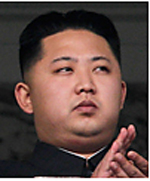SEOUL, South Korea - North Korean scientists have learned to produce crucial components of gas centrifuges inside their isolated country, undermining years of export controls and sanctions intended to stop the country’s enrichment of uranium for nuclear weapons, according to an analysis by two U.S. arms control experts made available Monday.
The analysis comes as experts have reported other signs that North Korea is activating or expanding its nuclear production facilities. Taken together, they suggest a new effort by the North to master all the facets of the nuclear production cycle - or perhaps to give the impression of nuclear progress that would drive new offers of talks or economic aid, in the view of some analysts.
The new study focuses on production of advanced centrifuges, a technically difficult feat that the U.S. and others have tried to make harder for the North with a network of sanctions and bans on the export of sophisticated parts and metals.
If the North Koreans are successfully making their own parts, they would essentially invalidate much of the international strategy to force them to denuclearize and make it more difficult to monitor their production progress.
“That means, unfortunately, that we won’t be in a good position to spot them expanding the program through foreign shopping expeditions, and that policies based on export controls, sanctions and interdiction won’t get much traction, either,” said Joshua Pollack, one of the experts presenting the findings this week. “The deeper implication, if they are able to expand the program unchecked, is that we’ll never be too confident that we know where all the centrifuges are. And that in turn could put a verifiable denuclearization deal out of reach.”
Pollack’s findings in collaboration with Scott Kemp, an expert on centrifuge technology at the Massachusetts Institute of Technology, will be presented Wednesday during a conference organized by the Asan Institute for Policy Studies in Seoul.
Pollack said he and Kemp had analyzed such open-source data as scientific journals, news reports and propaganda from North Korea. They found evidence that the country is learning - or has already learned - how to make crucial centrifuge components and related technologies and materials, such as uranium hexafluoride, vacuum pumps, frequency inverters, magnetic top bearings and ultra-high-strength steel. He said that domestic production appeared to have begun no later than 2009.
North Korea shocked the United States in 2010 when its officials escorted a visiting U.S. nuclear expert, Siegfried S.Hecker of Stanford University, to their main nuclear complex in Yongbyon, north of Pyongyang. There, they showed him a modern plant that they said housed 2,000 gas centrifuges, a technology that North Korea said it would use to enrich uranium for reactors but that U.S. officials feared was a cover for making highly enriched uranium for atomic bomb fuel. Until then, the North’s sole source of weapons fuel had been plutonium gleaned from the waste of a mothballed nuclear reactor in Yongbyon.
Then, this April, at the height of tensions incited by the North’s nuclear test in February, the country declared that it would “adjust and alter the use of the existing nuclear facilities” for “bolstering up the nuclear armed force both in quality and quantity.” It said that included immediately restarting the Yongbyon facilities.
Since Hecker’s visit to Yongbyon in 2010, he and other experts have said that North Korea was likely to have produced and hidden many more centrifuges elsewhere in the country. Unlike the North’s old plutonium program, which involved a highly visible nuclear reactor, centrifuge plants are relatively easy to hide, they say.
In 2011, the mass-circulation daily Chosun Ilbo of South Korea quoted an anonymous defector from North Korea as saying that the country had been building centrifuges in Huichon, an industrial town about 35 miles northeast of Yongbyon, since the late 1990s. He said the North had imported the motors for centrifuges from such countries as Japan, France and Russia.
How to ensure that North Korea does not lie about the scale of its nuclear weapons program was a central dispute behind the collapse of six-nation talks aimed at ending the North’s nuclear weapons programs in late 2008. That dispute will be harder to settle if the North can produce centrifuges indigenously.
North Korea and its main ally, China, have recently tried to reconvene the six-nation talks. But the U.S. and its allieshave said they will resume the talks only if the North agrees to eventually give up its nuclear arsenal.
As evidence to back up their analysis, Pollack and Kemp cited photographs of Kim Jong Il, the North Korean leader who died in 2011, and his son and the current leader, Kim Jong Un, visiting underground tunnels to inspect increasingly sophisticated machine tools of the kind needed to make centrifuge rotors. They also cited accounts of iron- and steel-making technologies in North Korean publications, as well as scientific reports and patent awards that they said described work on centrifuge production.
Front Section, Pages 5 on 09/24/2013

